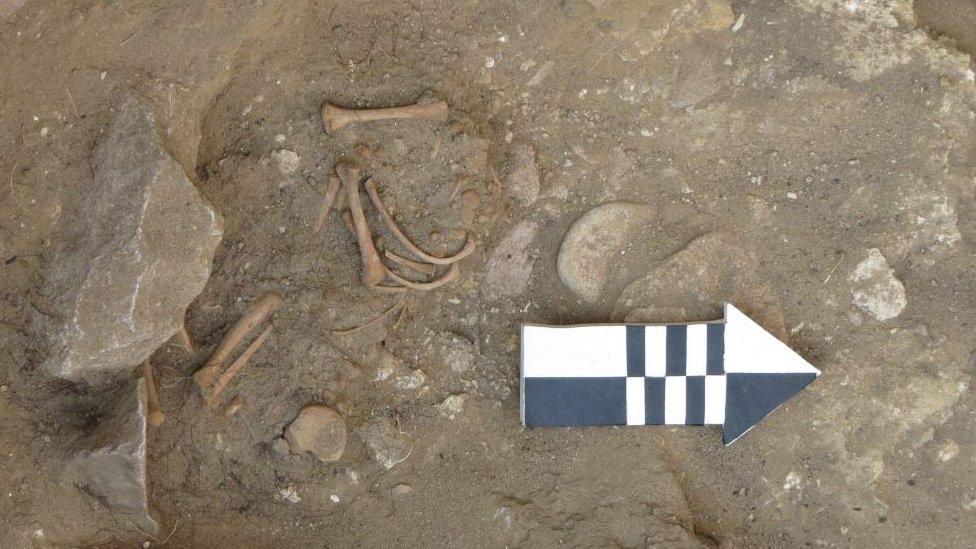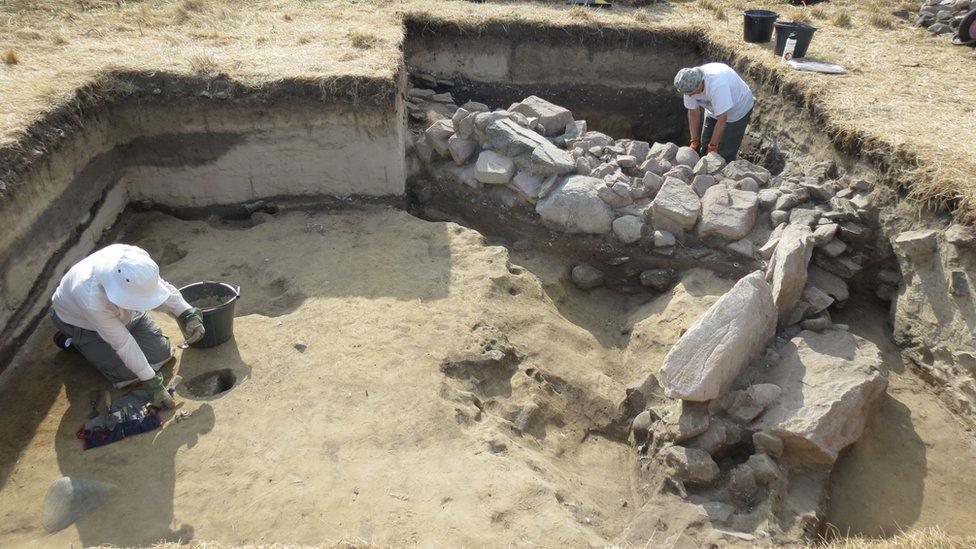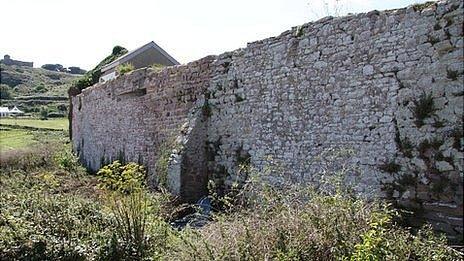Roman fort baby 'died in 19th century'
- Published

Bone specialist Jenny Cataroche excavating the skeleton
A baby's skeleton found near a Roman fort on Alderney was probably buried there in the early 19th century.
The tiny remains were discovered at the Nunnery - one of the best-preserved small Roman forts in Britain - during a dig at the site last summer.
States of Guernsey archaeologist Dr Phil De Jersey said they had been carbon dated to around 1820 when the structure was being used by soldiers.
He said it was possible the child's parents were connected to the garrison.
"The most likely explanation is the parents of this child had some association with the Nunnery," he said.
"The problem is ... we are making up theories and explanations to explain something very unusual."
He said that even if that was the case it was still a "strange" place to bury a child.
The team were excavating a small trench on top of the gate of the Nunnery to check when it was modified from a Roman gate to a more recent gate when they made the discovery.

The skeleton was found near the gate of the Roman fort which is known locally as the Nunnery
Dr De Jersey said the find was "totally unexpected" because it was not consecrated ground or a place where a child would normally be buried.
He said the remains had been analysed by bone expert Jenny Cataroche who said the baby had been "full term" at about 38 weeks.
"It could be a stillbirth," he said.
"We can't tell how it actually died (and) we can't say if it was a boy or a girl."
Dr De Jersey added that the burial was not orientated east to west as you would expect with a Christian burial.
The bones will be reburied in Alderney this summer.
- Published1 August 2018

- Published25 November 2011
